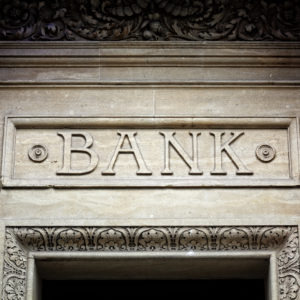It’s an election-winning formula that’s worked in the short term for politicians of both parties, critics note. Lots of spending and cheap money.
As President Joe Biden runs huge deficits some wonder if the economy will eventually self-destruct.
Popular economic policies, critics say, often seem successful in the short run but eventually turn toxic. And if that repeats, it won’t be the first time banking and political leaders destroyed the economy. Today, the government runs record deficits.
Federal taxes reached a record $1.7 trillion in the October-through-March period, while federal spending climbed to $3.4 trillion, according to the U.S. Treasury’s monthly statement. The United States ran a deficit of $1.7 trillion over the last six months, a yearly red-ink pace of about $3.5 trillion. With increasing debt, the nation’s long-term red ink of some $28 trillion exceeds 100 percent of GDP.
Historians and economists note several presidents tried easy money/big spending before.
Examples include President Richard Nixon’s election year Social Security increase in 1972 to the Trump/Biden administrations’ stimulus payments.
Presidents and Fed leaders have bungled before, critics say, pointing to easy money policies that triggered the crash of 2008 and 1970s stagflation.
“Initially, the low-interest rate policies of the Fed and the policies of the Nixon administration seemed to work in the early 1970s,” says George Selgin, a Cato Institute economist. Nixon, he notes, won easy re-election in 1972.
These policies initially seemed to produce prosperity.
Later, Selgin noted, prices of necessities shot up. It was “shocking,” he says.
It was also unprecedented. Prices rose at an alarming double-digit rate but the economy stopped growing. That’s something economists previously said couldn’t happen simultaneously. It led to a new term: stagflation.
Most analysts agree politics, not the rising price of oil, caused stagflation. In 1970 Nixon, looking to the 1972 elections as was most of Congress, sought policies that would reverse the recession of the late 1960s just as governments today use spending and the Fed to restart the economy.
Nixon ended the Bretton Woods agreement. That broke the last dollar link to gold. Gutting Bretton Woods cheapened the dollar. Foreigners holding dollars were short-changed.
It also meant that “the check on the government’s ability to increase the quantity of money—the gold standard–is gone,” wrote Bruce Bartlett in the book “Reaganomics.” Government, he added, now had a “powerful interest in maintaining a steady rate of inflation.” Once stagflation began, it was difficult to stop, historians note.
Three presidents, Nixon, Ford, and Carter, struggled with solving stagflation. “Nothing seemed to work,” wrote economist Robert Sobel in “The Worldly Economists.”
These presidents combined with Democratic Congresses along with a seeming politically-oriented Federal Reserve chairman/Nixon ally, Arthur Burns, produced double-digit inflation and 20 percent interest rates.
Burns assumed leadership of the Federal Reserve in the middle of what would later become known as the “Great Inflation,” which lasted from 1965 to 1982. Burns, with pressure from Nixon, supplied cheap money.
There is no doubt in my mind that if the Fed continues to keep the lid on with regard to increases in money supply and if the economy does not expand,” Nixon wrote Burns, “the blame will be put squarely on the Fed.” A Nixon aide bragged they “had Arthur Burns by the balls.”
Monthly money growth, which had averaged 3.2 percent in the first quarter of 1971, jumped to 11 percent in the same period of 1972. Money creation was 25 percent faster in 1972 compared to 1971, according to Fed numbers. But pain was coming.
During this period, the inflation rate, based on the year-over-year percent change in the consumer price index (CPI), rose from 1.0% in January 1965 to peak at a record high of 14.8% during March 1980. Investors were hurt. The stock market tanked over an 18-month period in 1973-74, dropping some 50 percent. High interest rates destroyed housing and car markets.
Later, after stagflation’s damage was apparent, some officials blamed Mideast sheiks. However, “the Wall Street Journal” wrote of the 1970s, “OPEC got all the credit for what the U.S. had mainly done to itself.”
Both Selgin and Mises Institute economist Jeffrey M. Herbener reject 1970s analogies but agree today’s policies could be dangerous.
Fed chairman Powell is creating money at a vigorous pace. Powell promises to keep interest rates at “close to zero percent.” Still, in a letter to a senator, Powell says, “We understand well the lessons of the high inflation experience in the 1960s and 1970s, and the burdens that experience created for all Americans. We do not anticipate inflation pressures of that type.”
However, a monetary historian, George Macesich, reviewing previous Fed problems in a 2000 book warns “the overwhelming majority of the most respected and influential economists of the day believed wholeheartedly in the philosophy and policy that the Federal Reserve System followed in committing its worst mistakes.”
Selgin and Herbener don’t expect stagflation but say current big spending/easy money policies could lead to problems.
Herbener sees the possibility of inflation rates above the Fed’s stated long-term goal of keeping inflation to 2 percent a year or less.
“The 30 percent rise in the money stock from Feb. 2020 to Feb. 2021 is highly unlikely to continue. If it did, then sustained, rapid price inflation will follow,” Herbener says.
“If these deficits and debts continue at the same pace,” Selgin added, “it could put the government in a terrible place in just a few years.”
The U.S. debt to GDP ratio reached 106.90 percent at the end of last year, according to TradingEconomics.com. The peak number was 118 percent during World War II.
Another economist bemoaned overspending.
Deficit spending “becomes a source of instability when deficits persist in good times as well as bad,” he wrote in his memoirs.
The writer was Arthur Burns.

